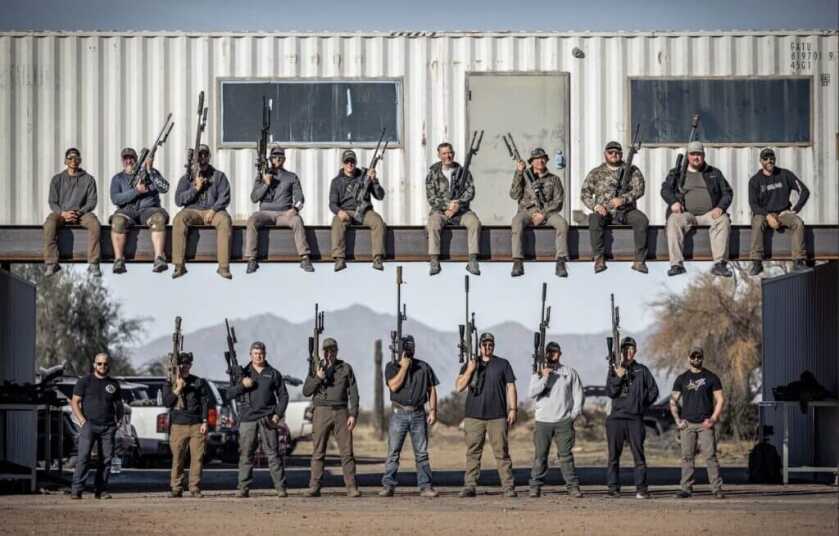
Estimated reading time: 11 minutes
Introduction to Precision Rifle
I recently had the opportunity to attend a 4-day Intro to Precision Rifle class in Arizona put on by Modern Day Sniper. Modern Day Sniper is the creation of Caylen Wojcik and Phillip Valeyo. Both got their start as Scout Snipers in the Marine Corps and later became instructors in the Marines and both have continued to refine their craft as teachers since entering the private sector. They make a point of saying they are not instructors, but teachers.
Table of contents
- Introduction to Precision Rifle
- Classroom Vs. Rangetime
- 10 things I learned at Modern Day Sniper
- 10. Optic Tricks
- 9. Rifle Setup For the Modern Day Sniper
- 8. Mounting the rifle
- 7. Rear Support
- 6. Spread Your Legs
- 5. Where to Focus
- 4. Long Range Variables
- 3. Levels and Cant
- 2. Learning From Spotting
- 1. Reading Wind
- Get Out and Train
This quote from Caylen illustrates the point. “There’s a difference between “instructors” and “teachers.” Instruction involves regurgitation of information. Dictation. Lecturing. Pointedness. Teaching, on the other hand, involves delivering information through mentorship, asking questions, and building a curriculum from the ground up using past experiences.”
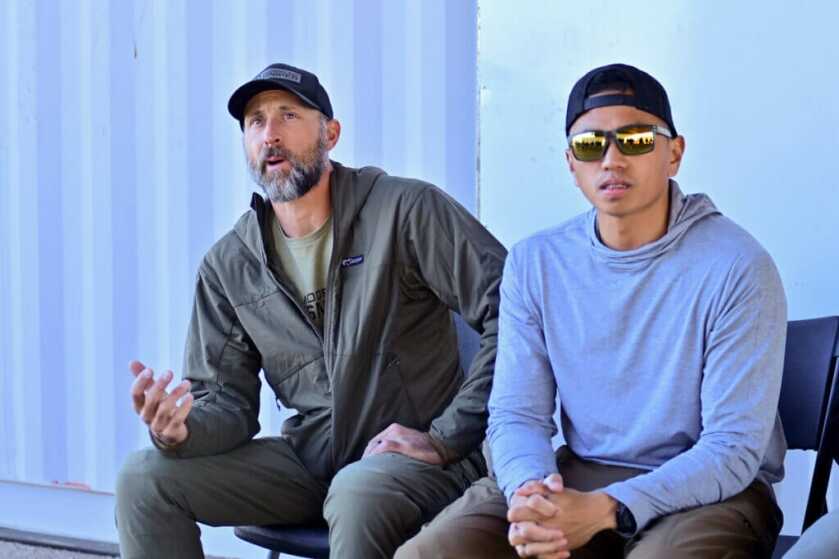
There are a lot of great shooters in the world, and there are many great teachers as well. Very few however are great at both teaching and shooting. Caylen and Phillip are part of that exclusive club. You can learn more about them here.
If you can attend shooting schools and classes you are lucky. Many people who want to learn don’t have the means or time to do it. Luckily, just about everything taught in the class is available online for free and on their youtube channel. They also put out a podcast with tons of information.
I prefer in-person classes when I can go participate as I learn and retain the information better. I also watch instructional videos to learn when I am not able to go in person.
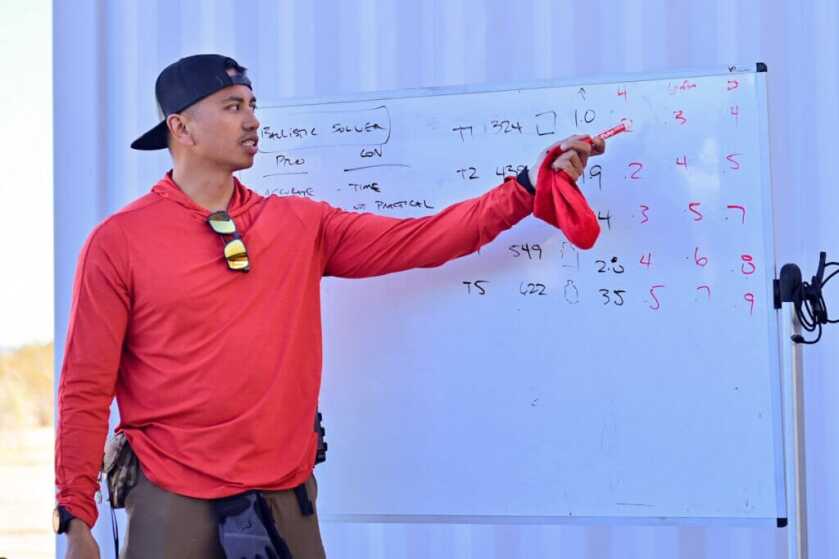
I took the class to improve my shooting in PRS matches. Other students wanted to learn the skills for hunting or law enforcement sniping. Why you take the class does not matter; you will learn because they teach long-range shooting fundamentals that apply to all long-range or precision shooting.

Classroom Vs. Rangetime
One of the things I liked best about their class was instead of hours of classroom followed by range time and trying to remember something from that morning at 3 PM, they broke it up into small chunks. Students get a single lesson on a specific subject, like trusting the wobble, zeroing, or mounting the rifle for about 45 minutes. Then students get on their rifles and work on that specific skill. It helps to re-enforce what you just learned and you don’t have to recall something from hours earlier.
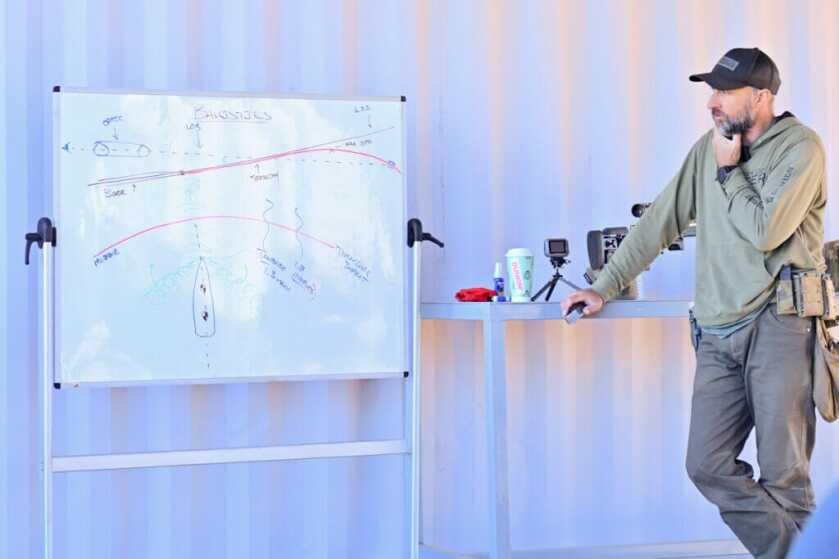
The MDS class also shows you measurable results. Students take the same test at the beginning and end of the class. I like it as you can measure your progress and see actual improvement. But enough about the generalities of the classes, let’s get to the meat and potatoes.
10 things I learned at Modern Day Sniper
10. Optic Tricks
On a Leupold Mark 5 optic, you can zero the parallax (side focus) wheel. Just about all premium scopes have a parallax wheel so you can get your target in focus. Most of the wheels have markings for various ranges and most of them don’t line up. With Mark V you can loosen a set screw and “zero” the parallax just like you would “zero” your elevation and windage turrets.
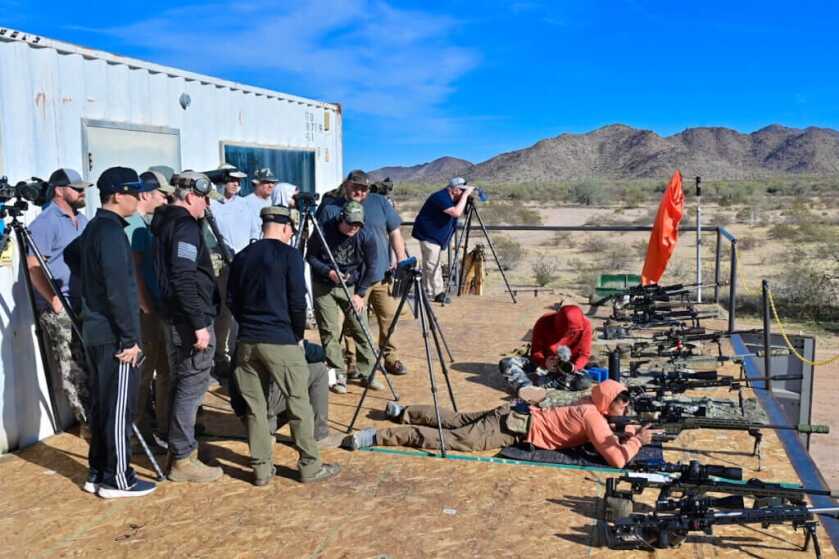
9. Rifle Setup For the Modern Day Sniper
Rifle setup is critical. MDS teaches you not to put the stock in your shoulder pocket (more on this later). As a result, most students had to adjust everything. Length of Pull, cheek riser height, bipod height, and move optics. It starts with LOP and being able to manipulate your bolt smoothly.

8. Mounting the rifle
Instead of the traditional stock placement in your shoulder pocket, MDS has you move the stock more toward your center. Ideally straight down under your eyeball or as close as you can get. This puts the rifle’s recoil toward the center of your body which makes it move less and makes it easier to spot your impacts. It is very awkward at first, and you will feel it on your collarbone the next day but it works.
On my competition bolt gun, I have a tunable brake/comp from APA. There are threaded holes on top and you use set screws to cut off or to let gas bleed from the holes. I had tuned mine to counter the up and left recoil of my rifle. By the end of the class, my recoil rises a small amount and goes right. The new stock position counters much of the upward movement and without my left shoulder getting pushed back, the gas vents on the comp push the rifle to the right. Obviously, I will be re-tuning the comp for use with the new stock position.
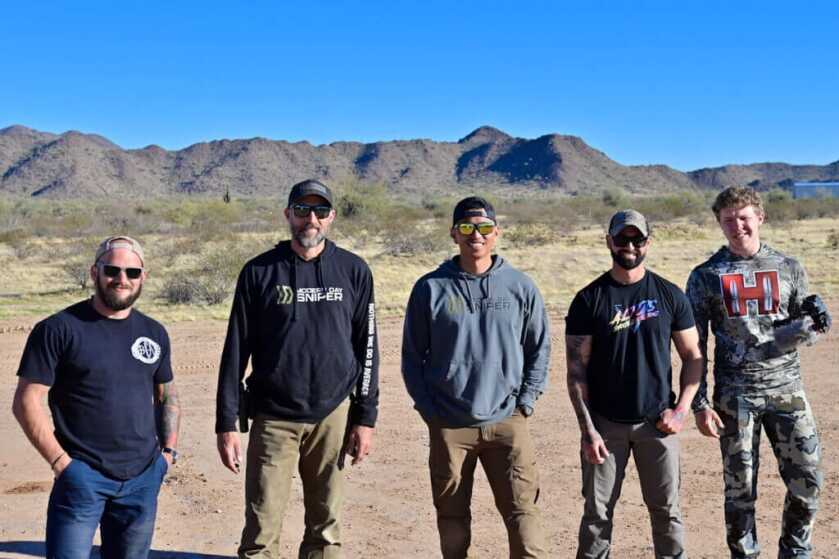
7. Rear Support
When your rifle is properly attached to your body via the stock your rear bag is just used to fill negative space instead of supporting the rear weight of the rifle. This allows you to be more mobile, laterally and vertically, and if needed, you can make precise shots with no rear bag at all.
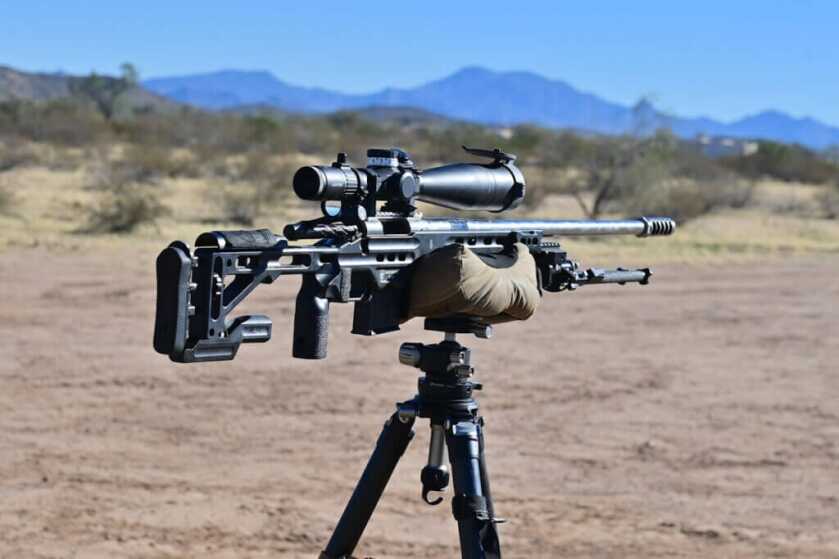
6. Spread Your Legs
The wider you can spread your legs apart when prone the more stability you gain. Be sure to get your heels flat on the ground too. If you can’t get your heels flat try turning your toes in and heels on the outside. You won’t be able to get them flat but there will be less movement and your rifle will be steadier.
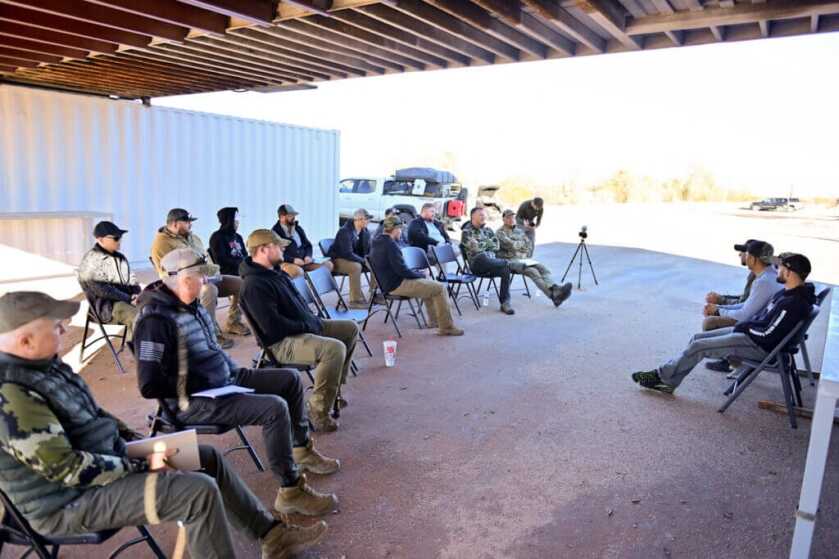
5. Where to Focus
Use a target focus instead of a reticle focus. Much like with a red dot, you want your focus to be on the target, not on the reticle. Look where you want the bullet to go on the target and the reticle will go there.
4. Long Range Variables
Long-range shooting is simply managing variables. Most of the variables you can control or calculate, like barrel twist, optic height, target distance, temperature, altitude, bullet velocity, and others. One variable must always be tested, drag. Drag, often called Ballistic Coefficient is basically how slippery your bullet is in the air. Ballistic solvers have calculations for this but the drag changes with velocity so you have to true it. Truing your DOPE or drag model involves shooting a target and verifying the holdover is correct and if it is not adjusting your ballistic solver so that it is correct.
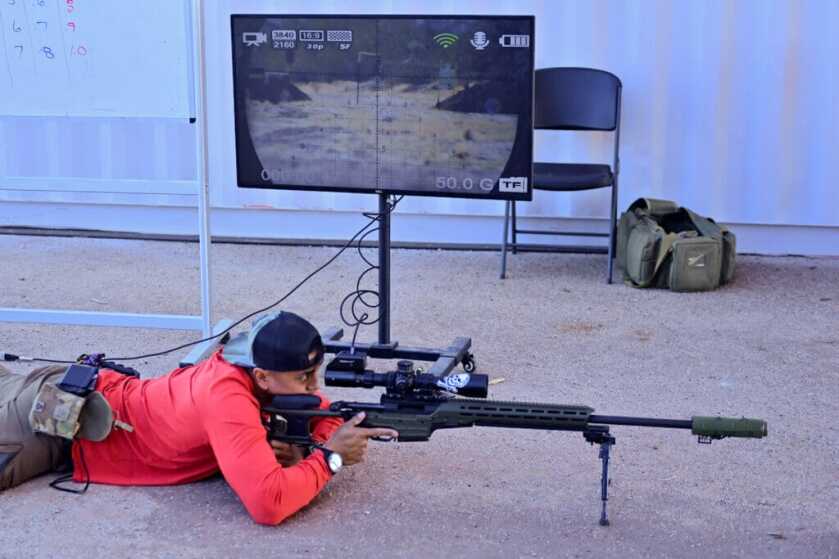
3. Levels and Cant
Put a level on your rifle and use it! There are many ways to check that your rifle is level. Cheap solutions are about $20 and you can spend hundreds on electronic levels like the Send It level are over $200. They all do the same thing, so just pick one and mount it. Before each shot make sure your rifle is not canted using the level. 1 degree of cant will account for 9 inches of drift when shooting a 308 at 1000 yards, or just under 1 inch at 100 yards. It matters more than you think.
2. Learning From Spotting
You can learn just as much observing on glass as you can shooting. Learn to be a good spotter. Ideally, you want to set up your glass on a tripod right behind the shooter. In many conditions, you can see the bullet trace. Trace is the air being disturbed by the bullet in flight. It’s hard to find at first but once you know what you are looking for it is much easier to find again. If your shooter misses a target at 700 yards and kicks up dirt it may look like a low left miss for example.
Instead, the bullet hit the dirt 50 yards behind the target so the dirt doesn’t tell you anything. If you watch the trace you can see exactly where the miss was. Spotting helps you learn how to read the wind and how much effect it has on the bullet. Lastly, a good spotter can talk a shooter onto target but you have to speak the same language. Give corrections in Mils/MOA rather than target width or height.
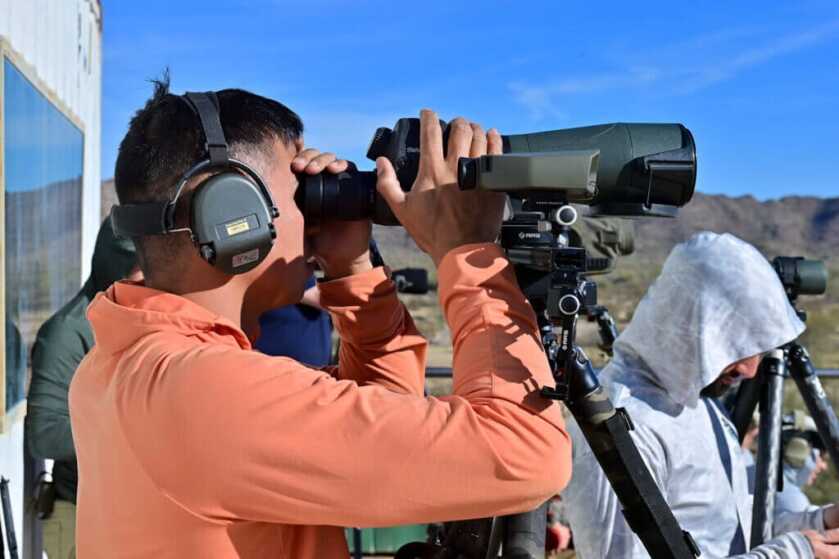
1. Reading Wind
Reading wind is more art and voodoo than science. At best it’s a guess but with experience, you can become better at guessing. A Kestrel meter is a great way to get wind speed and direction as well as account for wind in your firing solution but it has its limits. Mainly it is only measuring the wind at your location. The farther away your target the more likely that wind is doing something different.
Without a Kestrel you can use your senses to try and figure it out. You can hear the wind at about 4 mph, but at 12 mph+ it sounds the same. You feel the wind starting at 3 mph and make a good guess on its direction. For me, visual is best for estimation and it works downrange a lot of the time. If dirt is blowing you can tell direction. I found Mirage very useful as well. Mirages can tell you direction and if you watch mirages over time with different speeds you can get a speed estimate.
READ MORE: Bursting the Bubble – Send iT – Long Range Precision Shooting Level
Part of the class included engaging targets out to 800+ yards and you had to make your own wind call for at least the first shot. Using the various techniques taught in the class I was able to make good estimates but visual cues were the most accurate for me to gauge downrange wind.
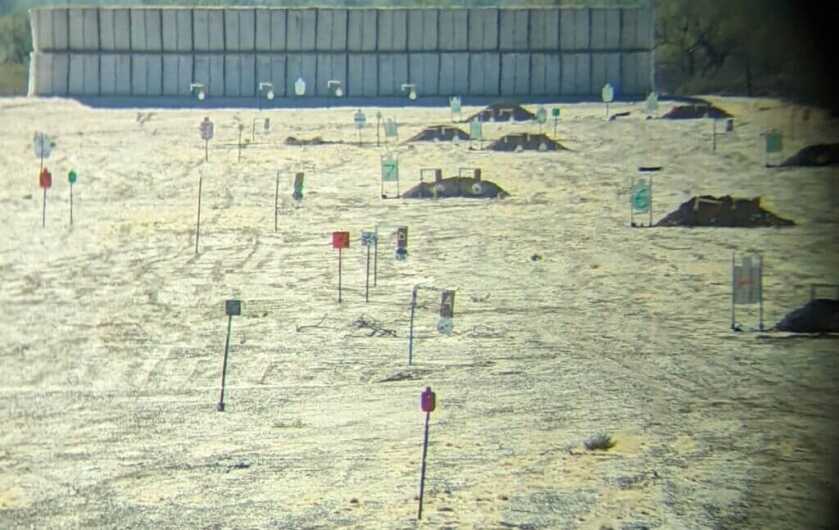
Get Out and Train
If you want to be better at long-range shooting it starts with just the basics and the fundamentals. Modern Day Sniper School does a great job of teaching those fundamentals. Give them a try if you can or check out the free lessons online. To see upcoming in-person classes look here.
*** Buy and Sell on GunsAmerica! ***

oops guess I should read the caption before posting.
It looks as if one of these individuals is flagging an individual above him. Hopefully not.
Sounds cool but military courses would probably rank stalking, setting up ffp and concealment the most challenging aspects training.
This was the Intro to Precision Rifle class, fieldcraft was not part of it.